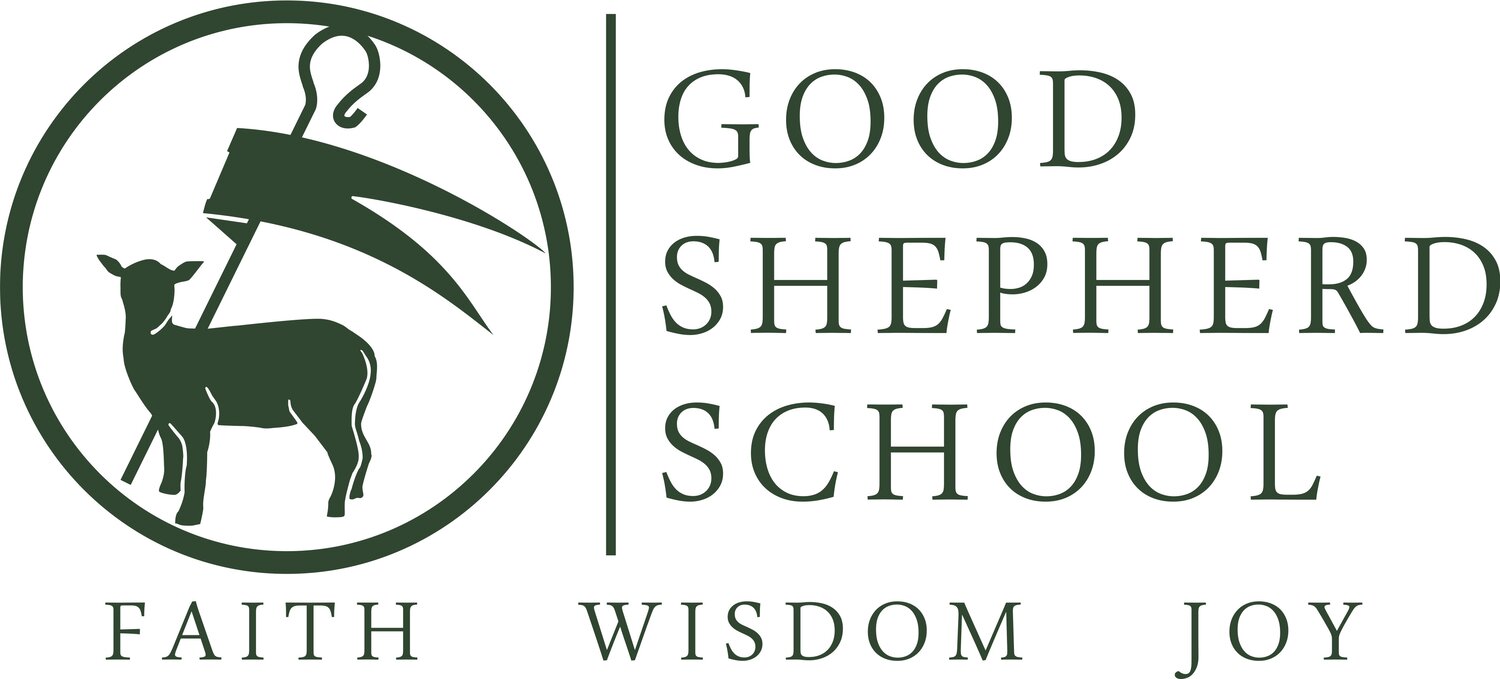Third & Fourth Grades
Language Arts
Language Arts provides the grammar as children build a proper foundation for mastering language. Since there is no other study that does not use language in some way, it is imperative that we construct a firm foundation here. Therefore, reading is acquired by a systematic use of phonics; handwriting is reinforced by frequent copy work; grammatical components are named, studied, and practiced; spelling is learned by pattern and rule; and even the meaning of words is made systematically knowable by memorized Latin and Greek roots.
Third Grade
Primary Language Lessons by Emma Serl
Fourth Grade
Primary Language Lessons by Emma Serl
Literature
The approach to literature in Third and Fourth Grade ties to Imago Dei, a foundational Catholic idea based on Genesis 1:27
God created mankind in His own image, in the Image of God
He created them; male and female He created them.
This Scripture teaches how all people bear the image of God (or Imago Dei, in the Latin). The idea holds that every human life is precious, and every person is inherently valuable and worthy. Sadly, because we live in a fallen world, the Imago Dei is often ignored or violated. In this program, we read stories that speak to the suffering from the violation of the Imago Dei. We learn about heroic people who risked their lives to stand up for human dignity. We see the power of defending the Imago Dei.
Indigenous Peoples of North America & First Encounters
People of the Breaking Day by Marcia Sewall
The Vikings by Elizabeth Janeway
Hiawatha and the Peacemaker by Robbie Robertson
Children of the Longhouse by Joseph Bruchac
The Golden Age of Discovery
Where Do You Think You’re Going, Christopher Columbus? by Jean Fritz
Pedro’s Journal by Pam Conrad
The Colonies
Pocahontas and the Strangers by Clyde Robert Bulla
The Landing of the Pilgrims by James Daugherty
The World of William Penn by Genevieve Foster
Amos Fortune, Free Man by Elizabeth Yates
Resource
A Child’s First Book of American History by Earl Schenck Miers
History
Students in Third and Fourth Grades learn the story of their history as Americans.
The Revolutionary War
A Voice of Her Own: The Story of Phillis Wheatley, Slave Poet by Kathryn Lasky
George vs. George: The American Revolution as Seen From Both Sides by Rosalyn Schanzer
Toliver’s Secret by Esther Wood Brady
Why Not, Lafayette? by Jean Fritz
Remember the Ladies: A Story About Abigail Adams by Jeri Chase Ferris
Shh! We’re Writing the Constitution by Jean Fritz
The Young United States
How We Crossed the West: The Adventures of Lewis & Clark by Rosalyn Schanzer
Heart of a Samurai by Margi Preus
The Story of Harriet Tubman, Conductor of the Underground Railroad by Kate McMullan
The Civil War
Lincoln: A Photobiography by Russell Freedman
John Lincoln Clem: Civil War Drummer Boy by E.F. Abbott
Seven Miles to Freedom: The Robert Smalls Story by Janet Halfmann
A critical part to understanding our American heritage is reading about those who paved the way for us.
Eliza: The Story of Elizabeth Schuyler Hamilton by Margaret McNamara
Henry Knox: Bookseller, Soldier, Patriot by Anita Silvey
The Escape of Oney Judge by Emily Arnold McCulley
Revolutionary Friends: General George Washington and the Marquis de Lafayette by Selene Castrovilla
A Spy Called James: The True Story of James Lafayette by Anne Rockwell
Thomas Jefferson: Life, Liberty, and the Pursuit of Everything by Maira Kalman
Worst of Friends: Thomas Jefferson and John Adams by Suzanne Tripp Jurmain
Red Cloud and Buffalo Bird Girl by S.D. Nelson
Dave the Potter: Artist, Poet, Slave by Laban Carrick
The Journey of York: The Unsung Hero of the Lewis & Clark Expedition by Hasan Davis
Mumbet’s Declaration of Independence by Gretchen Woelfle
Mark Twain and the Queens of the Mississippi by Cheryl Harness
Noah Webster and His Words by Jeri Chase Ferris
The Young United States by Edwin Tunis
Catechesis
Students continue their participation in the Catechesis of the Good Shepherd at the Good Shepherd School Atrium in Purcellville, VA, where they enter the Level II Atrium in Third Grade, and Level III Atrium in Fourth Grade. These levels center around the image of Christ as the True Vine. Children are taught about their life in Christ and his Church as they discover the parts of the Mass in the Liturgy of the Word and the Eucharist.
Science & Nature Study
Drawing from the world of science all around us, teachers lead students in a guided study of nature. Students form a broad basis of knowledge as they learn about the continents, rock and mineral formations, weather, flora, fauna, food chains, and constellations. Children take weekly nature hikes and keep detailed journals, with specimens drawn and labelled. Particular focus is given to cross-disciplinary topics, such as the trumpeter swan while reading E. B. White’s Trumpet of the Swan.
The Book of Insects, selections by Arabella Buckley & Julia McNair Wright
Math
Our study of mathematics aims to give students mastery of concepts and skills. Rather than using a spiral system, we focus on single topics in-depth in order to truly understand them before rushing on. We gladly use repetition and practice in order to aid understanding, but not as an end in itself. As in all studies, the grammar of mathematics – addition and subtraction, multiplication tables, number sense – must be firmly established before more complex topics are broached. We use the Math Mammoth curriculum, as it best aligns with our goals.
By Third Grade, students move on to multiplication and division, the multiplication tables, fractions, area, perimeter, and word problems. Continuing in the Math Mammoth Curriculum, students in Fourth Grade practice their skills in multi-digit multiplication as they unpack how the system works. They use their skills to learn about time, temperature, length, weight, and volume, and unit conversion before moving on to long division in word problems, geometric concepts of perimeter, area, angles, and finally fractions and decimals.
